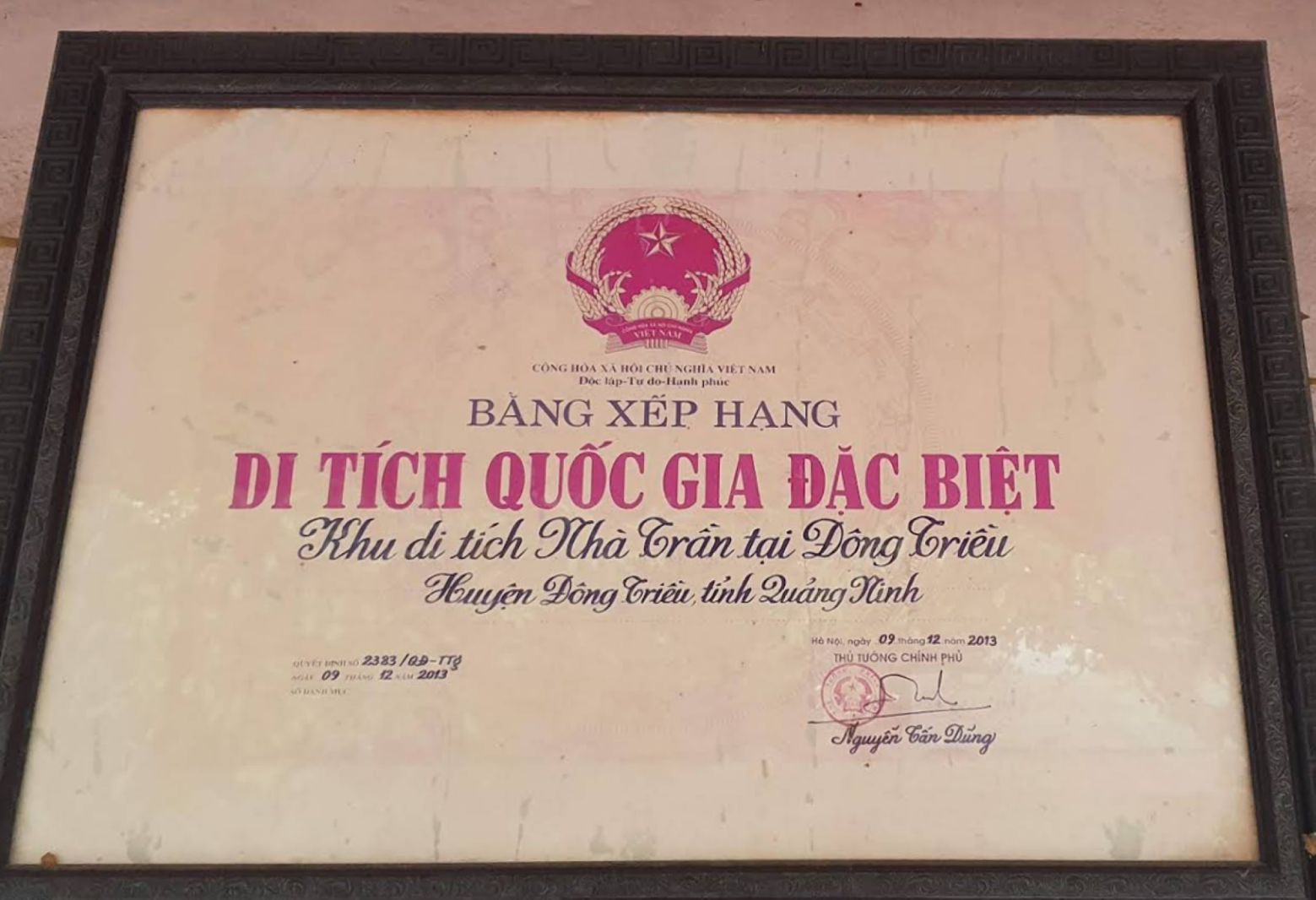Not only a simple religious relic, this place is also a historical witness, marking important events of the Tran Dynasty, a gathering and intersection of major ideological systems, and a source of inspiration for immortal poems.
Monuments from ancient times
The history of the formation of the pagoda and Ngoc Thanh temple, according to documents and legends, may have been lost since the Ly Dynasty as a temple of Taoism. However, it was not until the Tran Dynasty that this place really developed to its peak, becoming a large-scale religious and political center. The uniqueness of this complex lies in its unique bilding structure: both the "Thua" of Buddhism and the " Quan" of Taoism.
This parallel existence is not a coincidence but deeply reflects the spirit of "three principles of theorder" (Buddha - Confucianism - Confucianism) which was characteristic in the thinking of the aristocracy and intellectuals of the Tran Dynasty. The Tran Dynasty, with its Dong A spirit and open thinking, did not fall into the only ideological system but knew how to harmonize and continue different ideological flows to serve the cause of national construction and defense.
This complex is not only a place for monks and religious priests to practice, but was also chosen by the royal court as a place to worship the three emperors: Tran Minh Tong, Tran Nghe Tong and Tran Thuan Tong. The worship of kings here has elevated Ngoc Thanh's position from a simple religious center to a meaningful space of a sacred "tester", closely associated with the fate of the royal family.
More specifically, this is also the resting place of two kings, Tran Due Tong and Tran Thuan Tong, with the presence of Hy Lang. The combination of pagoda (where to worship Buddha), shrine (where to worship the monk), temple (where to worship the king) and mausoleum (where to bury the king) in a single architectural complex has created a value for Ngoc Thanh that few other relics have: Both a spiritual place, a memorial place, and a place to celebrate the political imprint of the royal dynasty.
The political role of Ngoc Thanh pagoda and restaurant is most clearly demonstrated through the tragic event at the end of the Tran Dynasty. The National History Center "Dai Viet Su Ky Toan Thu" recorded: "Khi Mao, Kien Tan in the 2nd year (1399), in the summer and April, Quy Ly forced the king (Tran Thuan Tong) to leave the family according to the teachings of the festival, at Ngoc Thanh restaurant in Dam Thuy village".
This was not a voluntary exiled family out of piety, but a forced political act of Ho Quy Ly to "umbly" expel the Tran Dynasty. The choice of Ngoc Thanh pagoda and temple, the sacred temple associated with the royal family, as a place to "receive" the king shows the careful calculation of Quy Ly. This action turned the peaceful monastic space into a stage for the end of the dynasty, engraved deeply in the history of the relic site in a tragic chapter.

Where Nguyen Trai visited
During the Le So period, when the Tran Dynasty had recently passed away, Ngoc Thanh's cultural values and charming beauty continued to attract nobles and courtesans to visit. Among them, it is impossible not to mention the famous Nguyen Trai. Once returning to the old place, moved by the wild, colorful scenery of time, he left behind the immortal poem "The Pearl of the Year":
"The castle is still high
This afternoon, remember which trip I have been to for ten years
The talented goldsmith is full of fallen pine flowers
The clouds of the distant and distant sky are ringing
The first to leave the peak of gold
It's a pity that sleepwalk bureaucracy is hard to find
The dreary hawk
The cold sound of forest canopy".
The poem is not only a depiction of the scene but also a deep reflection on the changes of creation and humanity. The images of "Kim Dan day hoa hoa hoa hoa hoa", "Rung chua khanh vang thuong thuong trang" paint the space that is both pure, quiet, and superficial. But then the regret for the golden past was expressed through the emotional verses: "The fairy left the peak of gold / It's a pity that the dream of a happy life is hard to find".
These historical and cultural values are today further reinforced by important archaeological discoveries. Excavations in 2013 and 2016 have exposed architectural layers ranging from the Tran to Nguyen dynasties. The discovery of architectural traces from the Tran Dynasty has provided authentic physical evidence for the date and scale of the project.
One of the most notable discoveries was the phao-shaped well. This is not only a source of domestic water, but in Taoist views, it is also considered a "land of milk and honey" - a relic with symbolic, core meaning, indispensable in the structure of Taoism, a gathering place for the spirituality of heaven and earth.
In addition, the solid stone embankment system surrounding the mountain slope, traces of rectangular foundations that are said to be the foundation of the "threats" of restoration, along with artifacts such as stone feet, architectural materials... have gradually recreated the grand scale of the relic complex in the past.
Today, located in the complex of the Tran Dynasty's special national relics in Dong Trieu, the pagoda and Ngoc Thanh restaurant are not only the pride of the people of Quang Ninh but also invaluable assets of the whole nation. The efforts to restore and embellish the relic are being implemented, promising to return it to its original stature, so that this place can continue to be an attractive destination, a historical educational address and a spiritual space for future generations.
The complex of Ngoc Thanh Pagoda and Monument relics, related relics in the Tran Dynasty Historical Site in Dong Trieu, were ranked by the Prime Minister as a Special National Monument in Decision No. 2383/QD-TTg dated December 9, 2013.









